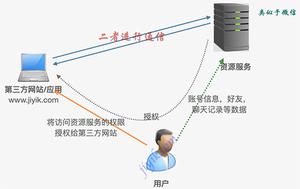第五课springboot实现全局异常处理

这里写自定义目录标题
- 简介
- 项目的结构
- 代码内容
- 1.pom文件
- 2.启动的main方法
- 3. GlobalExceptionHandler
- 4. BusinessException
- 5. PropertiesResource
- 6. ExceptionController
简介
项目中经常会碰到各种各样的异常处理,如果在项目各个地方都通过
try{
}catch{
}
就会觉得代码很凌乱,而且我们需要对代码中的异常进行包装;不能吧对应的异常信息直接返回给上游.
正常的操作使用统一的异常处理内容;
同时根据异常码给定指定的异常信息内容; 通常我们可以配置在对于的properties文件中;或者存放到指定的redis缓存中去;对于从缓存中获取比较简单结合项目直接使用;
本案例是通过读取本地properties文件中的code->msg来处理的;
项目demo下载
项目的结构
代码内容
1.pom文件
2.启动的main方法
springboot 项目的启动入口类
@SpringBootApplicationpublicclassMainApplication{
publicstaticvoidmain(String[] args)throws Exception {
SpringApplication.run(MainApplication.class, args);
}
}
3. GlobalExceptionHandler
全局的异常处理类,在当前类里面定义各种exception类的处理方式;
案例中我们自定义的 BusinessException 里面通过异常code 来获取对于的msg
@RestController@ControllerAdvice
publicclassGlobalExceptionHandler{
privatestaticfinal SimpleDateFormat sdf =newSimpleDateFormat("yyyy-MM-dd HH:mm:ss");
privatestaticfinal String ASSERT_ERROR_CODE ="10000";
privatestaticfinal String SYSTEM_ERROR_CODE ="20000";
@ExceptionHandler(value = BusinessException.class)
@ResponseBody
public Object businessException(HttpServletRequest req, Exception e)throws Exception {
boolean instance = BusinessException.class.isInstance(e);
if(instance){
BusinessException bex =(BusinessException) e;
JSONObject json =newJSONObject();
json.put("retCode", bex.getErrorCode());
json.put("retMsg", bex.getErrorMsg());
json.put("path", req.getRequestURI());
json.put("timestamp", sdf.format(newDate()));
return json;
}
return"---BusinessException Handler---:"+ e.getMessage();
}
@ExceptionHandler(value = IllegalArgumentException.class)
@ResponseBody
public Object testException(HttpServletRequest req, Exception e)throws Exception {
boolean instance = IllegalArgumentException.class.isInstance(e);
if(instance){
IllegalArgumentException bex =(IllegalArgumentException) e;
JSONObject json =newJSONObject();
json.put("retCode", ASSERT_ERROR_CODE);//标识统一的断言的异常信息
json.put("retMsg", PropertiesResource.getMessage(ASSERT_ERROR_CODE));
json.put("retDesc", bex.getMessage());
json.put("path", req.getRequestURI());
json.put("timestamp", sdf.format(newDate()));
return json;
}
return"---IllegalArgumentException Handler---:"+ e.getMessage();
}
@ExceptionHandler(value = Exception.class)
@ResponseBody
public Object exception(HttpServletRequest req, Exception e)throws Exception {
JSONObject json =newJSONObject();
json.put("retCode", SYSTEM_ERROR_CODE);//标识统一的断言的异常信息
json.put("retMsg", PropertiesResource.getMessage(SYSTEM_ERROR_CODE));
json.put("retDesc", e.getMessage());
json.put("path", req.getRequestURI());
json.put("timestamp", sdf.format(newDate()));
return json;
}
4. BusinessException
我们自定义的exception类, 里面新增errorCode 和errorMsg字段
当我们往外抛出异常的时间指定对于的errorCode 然后在当前方法里面设置
errorMsg 主要是通过 PropertiesResource 来实现的内容;
publicclassBusinessExceptionextendsRuntimeException{privatestaticfinallong serialVersionUID =1L;
private String errorCode;
private String errorMsg;
publicBusinessException(String exceptionCode){
this.errorCode = exceptionCode;
this.errorMsg = PropertiesResource.getMessage(exceptionCode);
}
publicBusinessException(String exceptionCode,String errorMsg){
this.errorCode = exceptionCode;
this.errorMsg = errorMsg;
}
publicBusinessException(String exceptionCode, String errorMsg, Throwable cause){
super(cause);
this.errorCode = exceptionCode;
this.errorMsg = errorMsg;
}
// ..get/set 省略..
}
5. PropertiesResource
当前类似一个工具类吧properties文件中的异常码对于的 异常信息给加载进来
static 代码块中指定需要加载的properties文件的地址;
publicclassPropertiesResource{privatestatic ReloadableResourceBundleMessageSource i18nMessage ;
publicPropertiesResource(){
}
publicstatic String getMessage(String messageKey, Object[] messageArgs){
String message = null;
try{
message = i18nMessage.getMessage(messageKey, messageArgs, LocaleContextHolder.getLocale());
}catch(MissingResourceException var4){
message ="i18nMessage is: "+ messageKey +", can"t get the I18n properties";
}catch(Throwable var5){
message ="i18nMessage is: "+ messageKey +", can"t get the I18n properties";
}
return message;
}
publicstatic String getMessage(String messageKey){
returngetMessage(messageKey,(Object[])null);
}
static{
i18nMessage =newReloadableResourceBundleMessageSource();
//读取message.properties文件内容
i18nMessage.setBasenames(newString[]{"config/message","classpath:message"});
}
}
6. ExceptionController
访问的入口类内容;
通过访问
http://localhost:8080/exception/test 测试统一的断言异常
http://localhost:8080/exception/test?flag=3000 测试业务异常内容
http://localhost:8080/exception/test?flag=20000 测试系统异常内容
观察不同的异常的处理内容
@RestController@RequestMapping("/exception")
publicclassExceptionController{
privatestaticfinal Logger khy = LoggerFactory.getLogger("KHY");
@RequestMapping("/test")
public String login(String flag)throws Exception{
Assert.notNull(flag,"flag不能为空");
if(flag.equals("30000")){
thrownewBusinessException("30000");
}elseif(flag.equals("30001")){
thrownewBusinessException("30001");
}elseif(flag.equals("30002")){
thrownewBusinessException("30002");
}elseif(flag.equals("20000")){
thrownewException("测试系统异常");
}
return"执行成功";
}
}
访问对于的链接的效果图
1.
2.
3.
这么就完成了一个简单的全局异常处理的内容;
以上是 第五课springboot实现全局异常处理 的全部内容, 来源链接: utcz.com/z/518085.html





